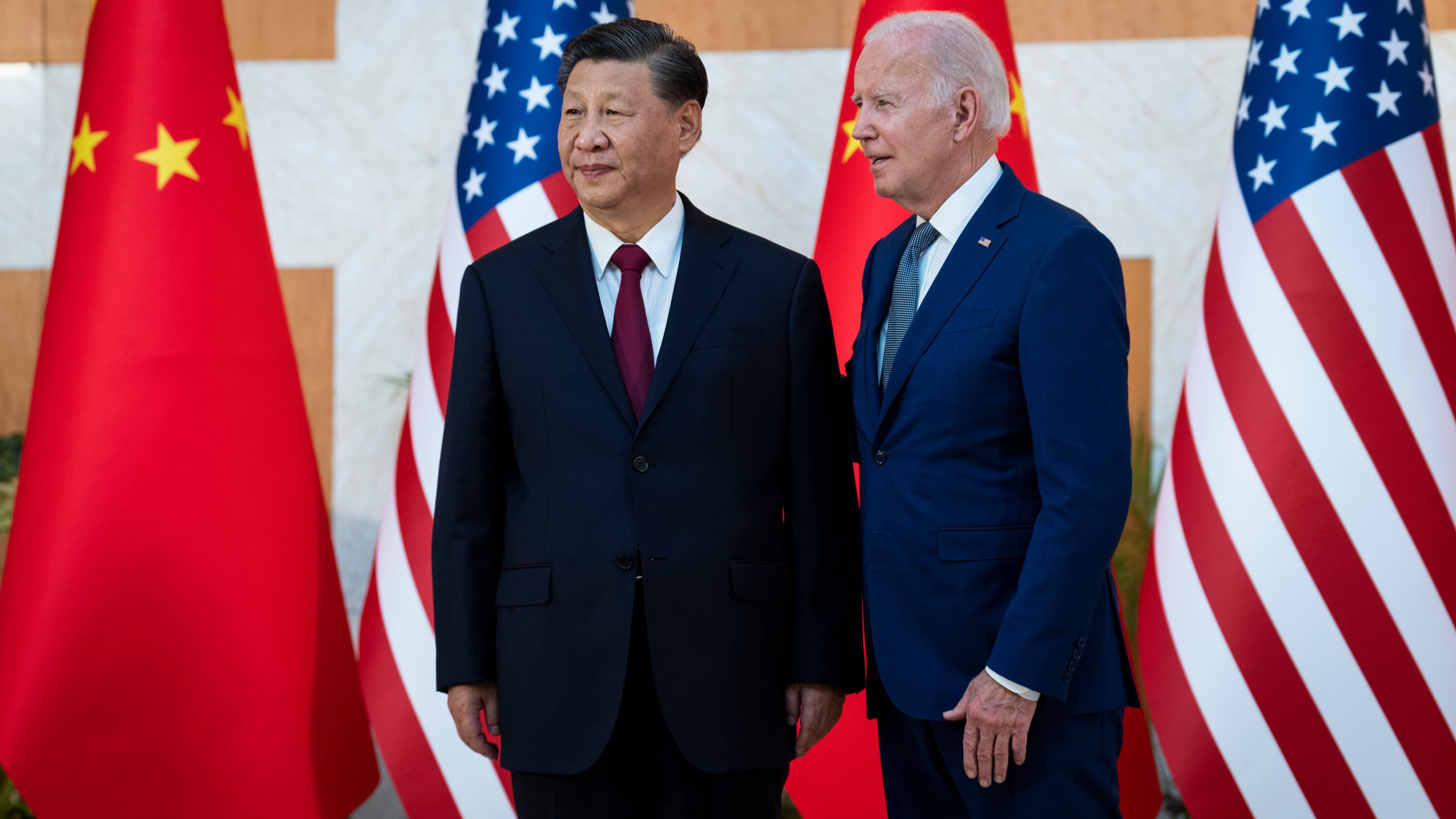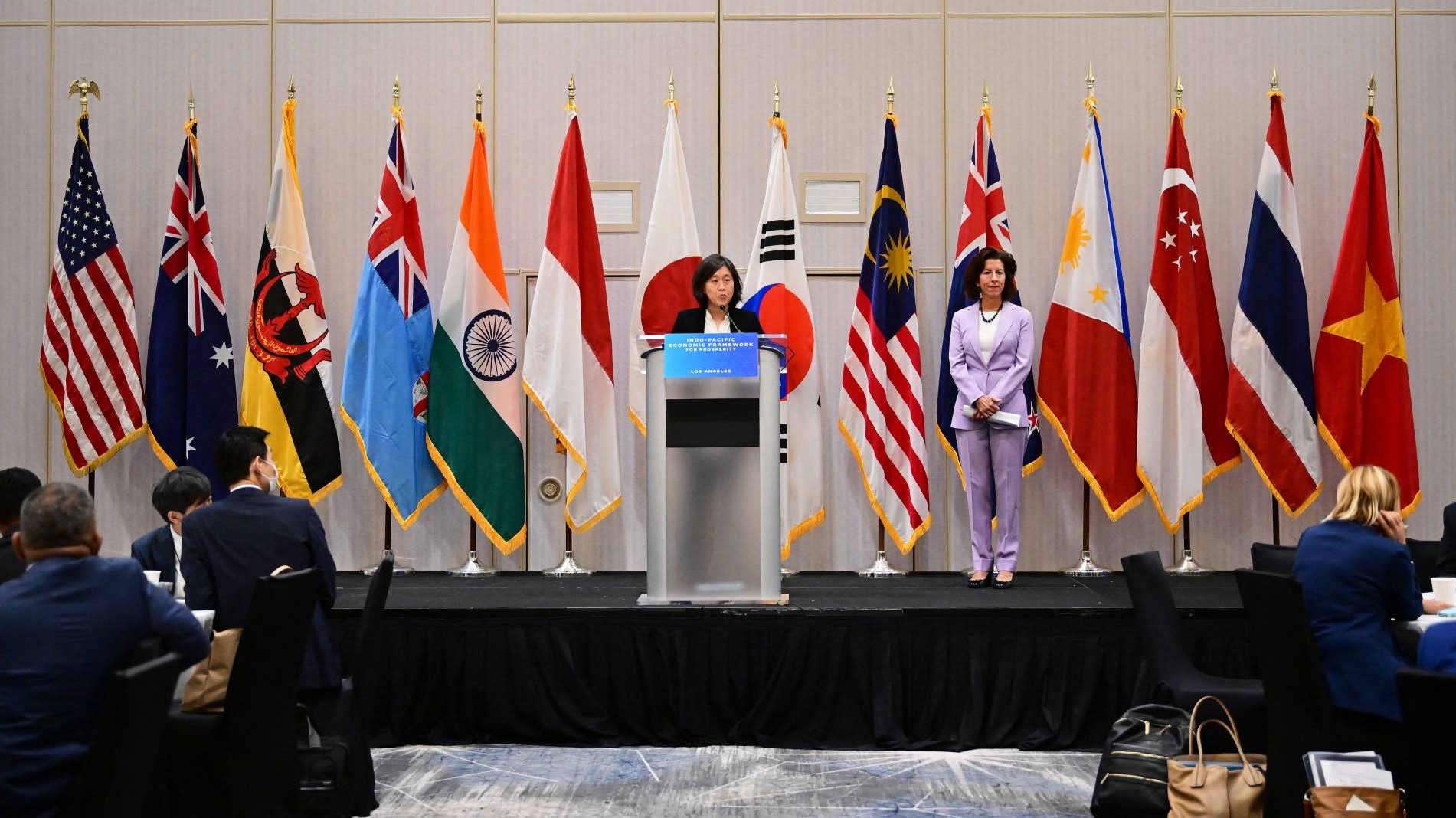As the Group of 20 and Asia Pacific Economic Cooperation summits wrap up in Bali and Bangkok, the fractious trade landscape we’ve confronted in recent years appears likely to continue – and may deteriorate further.
President Xi pointed out that the two countries take different paths; while the United States practices capitalism, China practices socialism. Such difference is nothing new and will continue to exist. For China and the United States to get along, it is vital to recognize and respect such difference. Neither side should try to remold the other in one’s own image, or seek to change or even subvert the other’s system.
In other words, China is going to continue to be China, and the US and the global trade system will have to adjust to China rather than vice versa.
Although perhaps not earth-shattering on the surface, these words would have piqued the ears of those steeped in the strictures of the World Trade Organization (WTO). Arguably at least, they contravene a foundational premise of the WTO.
Establishment of WTO based on market economics
As the WTO was set to come into being, the guiding principles and expectations of WTO membership were laid out in the Marrakesh Declaration in 1994. A key foundational principle was that market forces rather than government intervention would determine international trade outcomes. Few foresaw that a WTO member, not least one that had reached such economic scale on the back of accession to the system, would reject market-based policies in favor of a state-led trade regime.
According to the Marrakesh Declaration, the founding of the WTO was explicitly recognized as a “new era of economic cooperation that reflects the widespread desire to operate in a fairer and more open multilateral trade system.” Members would participate in the trade system “based upon open, market- oriented policies.” Members would strive for “greater coherence of policies”. The “significant measures of economic reform” that had already been implemented in “formerly centrally planned economies” were warmly welcomed.
The maintenance of China’s state-led system poses significant challenges for the rules-based global trade system and virtually ensures ongoing trade tensions with the US. Since existing trade rules are predicated on the assumption that WTO members would be market-driven economies, they are largely incapable of adequately coping with the significant distortions created by China’s state-directed trade practices. These include systematic dumping, massive industrial subsidization, preferences for domestic firms, hidden trade barriers, opaque trade regulations, and coerced technology transfers.
With the WTO unable to play its intended role as global trade referee, due in part to a US embargo on the body’s appellate process, expect the US and China to continue to slug it out over trade. Existing punitive tariffs are likely to remain in place, while regulatory trade restrictions, especially in technology, will escalate. China will insulate itself as best as possible from US measures, counter-retaliate when prudent, and seek to fortify the viability of its existing system.
The action shifts to Bangkok
In addition to trying to whip up enthusiasm for US leadership in APEC, Vice President Harris also attempted to promote the administration’s only prominent regional trade initiative: the Indo-Pacific Economic Framework for Prosperity (IPEF).
Selling the IPEF
Although the Vice President gamely tried to make the pitch, the simple reality is that the IPEF is not what US partners in the region want. They are far more interested in a traditional free trade agreement that would include market access commitments by the US, something which the IPEF explicitly excludes. And although the four negotiating pillars – trade, supply chains, clean economy, and fair economy – will undoubtedly include markets and issues that will be of interest to partners, the US agenda likely rubs many the wrong way.
Where does all this leave us?
As the dust settles in Southeast Asia after back-to-back economic summits, here’s what we know:
- Those hoping for a cooling in US-China trade tensions are likely to be disappointed. The Biden-Xi meeting in Bali only served to reconfirm that the core, systemic fault line which divides the countries and has given rise to the US-China trade and technology war will not be narrowed anytime soon. To the contrary, President Xi has doubled down on China’s intention to maintain its system and told the US point-blank to refrain from efforts to change, remold, or subvert China’s state-directed, centrally managed system.
- In terms of the US relationship with the wider region, the words spoken and the signals sent in Bangkok likewise provide little reason for optimism. The signature US trade initiative for the region – the IPEF – is of marginal interest to most Indo-Pacific partners. And in a region where symbolism speaks volumes, the decision of the US President not to join his peers and make the pitch in person did not go down well. While the US has more than enough time to regain its APEC footing and boost the appeal of the IPEF, it is not off to an auspicious start.
© The Hinrich Foundation. See our website Terms and conditions for our copyright and reprint policy. All statements of fact and the views, conclusions and recommendations expressed in this publication are the sole responsibility of the author(s).





